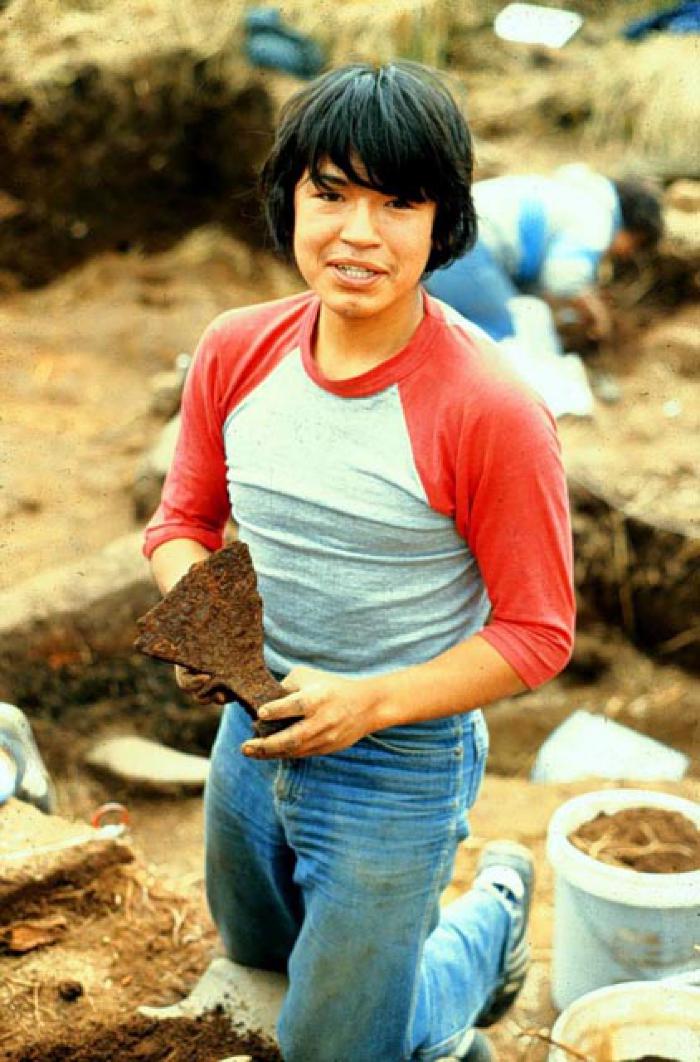Iron — Cawik

Although metals were a rare material in Alutiiq communities before the historic era, they were not unknown. Kodiak Alutiiq people traded with the Chugach Alutiiq people of Prince William Sound for copper from the Copper River area and collected small pieces of naturally occurring graphite, hematite, and iron. Strong ocean currents also brought metal to the Alutiiq homeland, washing Asian shipwrecks ashore. From this flotsam, people collected iron objects, like nails, that may have been incorporated into tools or hammered into useful shapes. A prehistoric tool handle from Larsen Bay’s Uyak site features an iron stain on its working end. Perhaps an ancient craftsman lashed a small piece of iron to the handle for use in delicate engraving or hole piercing.
In the historic era, iron tools gradually replaced traditional stone implements. Some new tools supplanted older forms. Other tools were simply updated with metal parts. A crooked knife in the Smithsonian’s Fisher Collection, collected on the Alaska Peninsula in 1884, features a steel blade for carving. However, this blade is lashed to a caribou-rib handle with spruce root, not unlike the carving tools traditionally made with beaver incisors. And ulu knives, once made of ground slate, were refitted with iron blades fashioned from discarded saw blades.
